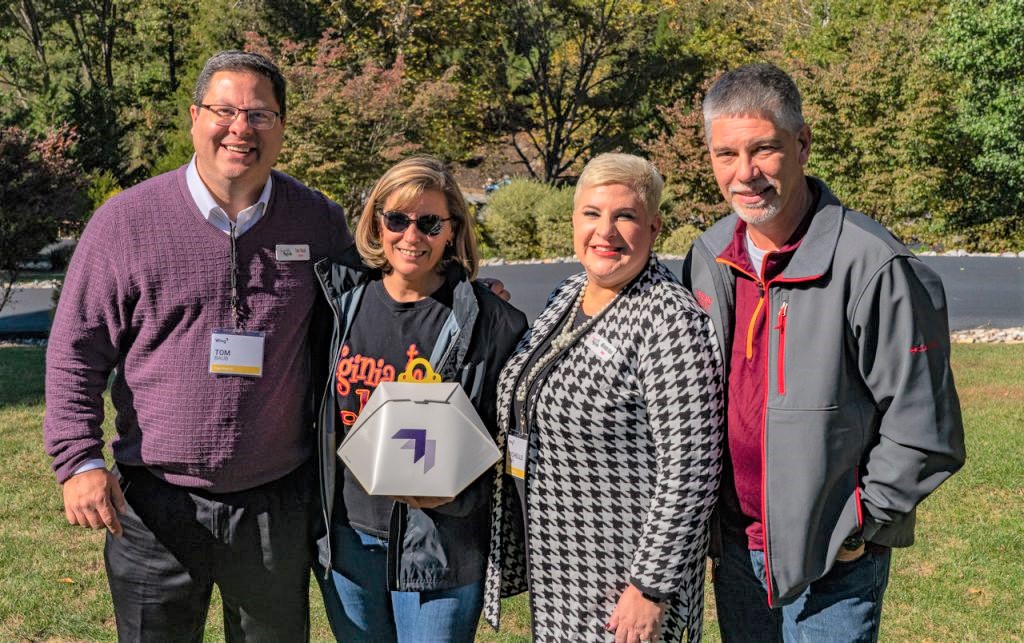
On a bright fall day two years ago, with three short drone flights, Christiansburg became a test case for one vision of the future of aviation.
Those three flights kicked off a drone delivery service that capped years of research and testing by the Virginia Tech Mid-Atlantic Aviation Partnership (MAAP), an FAA-designated drone test site, and Wing, the drone delivery arm of Google parent company Alphabet. For anyone following the progress of drone integration in the U.S., it was a pivotal achievement. But it’s what happened in the two years since that has been the real victory for this technology and for Virginia Tech and Wing’s approach to it.
Wing’s service in Christiansburg was the first in the U.S. to deliver goods directly to residences on demand. That made it the litmus test for whether drone delivery — a ubiquitous fixture of an imagined high-tech future — was viable in the present. Would it work? Was it safe? Would people like it?
Two years and many, many deliveries later, it’s obvious that the answer is yes.
“This was the first place in the country to have a service that’s a realistic preview of what drone delivery may look like when it’s implemented more broadly,” said Tombo Jones, MAAP’s director. Jones moved to Blacksburg just after an early series of Wing trials that tested their system by delivering burritos to students and faculty.
“Our job is to advance drone integration in a way that’s safe, secure, and genuinely beneficial,” Jones said. “To work with a company like Wing on the intensive research required to make a service like this possible and see the results unfold in our own community, has been an incredibly rewarding experience.”
In Christiansburg, Mayor Mike Barber says that drone delivery has been a boon for the community not just for the convenience of having packages delivered in minutes but also for the way it positions the town in an economy shifting toward technology.
“We remain proud to have Christiansburg as the first location in the United States to have drone delivery on demand, through Wing,” the mayor said. “The innovative technology has put Christiansburg at the forefront of drone delivery dialogue and served our citizens through a unique, safe, and convenient service. Having Wing in our community means growing opportunity for the future of robotics in Southwest Virginia and the future of delivery in Christiansburg.”
Wing expanded its original group of three partners — Walgreens, FedEx, and local retailer Sugar Magnolia — to include El Gran Rodeo, the Mockingbird Cafe, and Brugh Coffee. Drone delivery gave the businesses a new revenue stream that helped offset the drop in foot traffic.
They have worked with a school librarian to deliver books and a local Girl Scout troop to deliver cookies. All of the new vendors on that list were added during the pandemic. Before the pandemic forced a pause on in-person group activities, Wing and MAAP regularly hosted school groups and other visitors for outreach events and STEM workshops.
The results of a public perception survey MAAP conducted about a year after the launch underscored how popular the service had been. Of the more than 800 people who responded, 87% percent said they liked drone delivery, and 89% percent said they were likely to use it (or already had).
This was the first study to examine sentiment in a community that had actually experienced drone delivery, so those results portend a positive reception for the technology when it eventually rolls out more broadly. When stay-at-home orders expired and life in Christiansburg eased back towards normalcy, and Wing’s service stayed busy, it was clear: drone delivery is genuinely useful.
“Christiansburg is in many ways the birthplace of U.S. drone delivery,” said Jonathan Bass, Wing’s head of marketing and communications. “This milestone is a celebration of the community’s support, and contribution to the future of transportation.”
Wing has a lineup of new initiatives planned for Christiansburg, and they’re continuing to collaborate with Virginia Tech on major technical and operational challenges that need to be solved to enable drone delivery — and the drone industry in general — to reach its potential.


